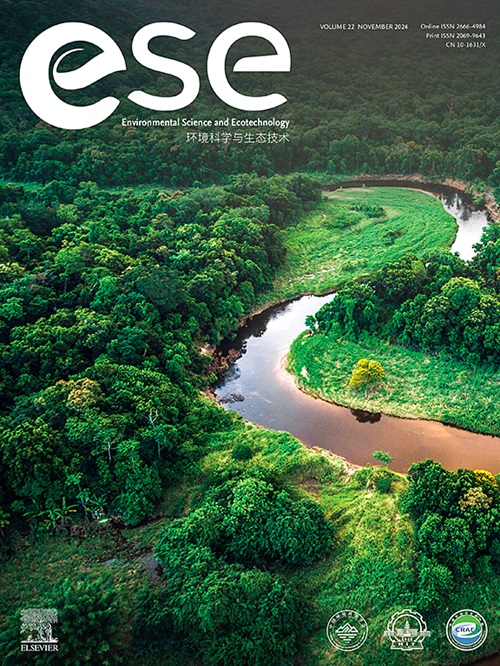Future-proofing CO2 mitigation towards a circular economy: A systematic review on process integration and advanced tools
IF 14.3
1区 环境科学与生态学
Q1 ENVIRONMENTAL SCIENCES
引用次数: 0
Abstract
Mitigating carbon dioxide (CO2) emissions, which are a principal contributor to global warming, necessitates prompt and proactive measures. This systematic review evaluates advanced process integration and optimization tools, highlighting the need for a circular economy paired with efficient waste management to achieve effective CO2 reduction. We systematically examine, for the first time, the applications and limitations of pinch analysis, Process-graph (P-graph), artificial intelligence (AI), computer-aided sustainable design (CASD), Internet-of-Things (IoT) sensor networks, and hierarchical blockchain frameworks. AI alone could save 2.6–5.3 gigatonnes of CO2 by 2030, and its integration with CASD and IoT enables more sophisticated mitigation strategies. We recommend comprehensive carbon-offset frameworks and green-finance mechanisms to strengthen carbon-trading systems. Circular-economy measures for waste-driven CO2 reduction remain under-represented in national climate policies owing to cross-sectoral complexity. Future work should advance interdisciplinary tools data science, system modeling, and decision-support frameworks and expand economic-feasibility studies of optimization strategies. Ensuring rigorous data quality, variability accounting, integration, transparency, and replicability is essential. Lastly, sustained collaboration among engineers, scientists, policymakers, and stakeholders is critical for developing scalable, sustainable solutions to climate change.

面向循环经济的面向未来的二氧化碳减排:对流程集成和先进工具的系统审查
二氧化碳是导致全球变暖的主要原因,减少二氧化碳的排放需要采取迅速和积极的措施。本系统综述评估了先进的工艺集成和优化工具,强调了循环经济与高效废物管理相结合的必要性,以实现有效的二氧化碳减排。我们首次系统地研究了夹点分析、过程图(P-graph)、人工智能(AI)、计算机辅助可持续设计(CASD)、物联网(IoT)传感器网络和分层区块链框架的应用和局限性。到2030年,仅人工智能就可以节省26 - 53亿吨二氧化碳,它与CASD和物联网的结合可以实现更复杂的缓解战略。我们建议建立全面的碳抵消框架和绿色金融机制,以加强碳交易体系。由于跨部门的复杂性,针对废物驱动的二氧化碳减排的循环经济措施在国家气候政策中的代表性仍然不足。未来的工作应该推进跨学科工具、数据科学、系统建模和决策支持框架,并扩大优化策略的经济可行性研究。确保严格的数据质量、可变性会计、集成、透明度和可复制性至关重要。最后,工程师、科学家、政策制定者和利益相关者之间的持续合作对于制定可扩展的、可持续的气候变化解决方案至关重要。
本文章由计算机程序翻译,如有差异,请以英文原文为准。
求助全文
约1分钟内获得全文
求助全文
来源期刊

Environmental Science and Ecotechnology
Multiple-
CiteScore
20.40
自引率
6.30%
发文量
11
审稿时长
18 days
期刊介绍:
Environmental Science & Ecotechnology (ESE) is an international, open-access journal publishing original research in environmental science, engineering, ecotechnology, and related fields. Authors publishing in ESE can immediately, permanently, and freely share their work. They have license options and retain copyright. Published by Elsevier, ESE is co-organized by the Chinese Society for Environmental Sciences, Harbin Institute of Technology, and the Chinese Research Academy of Environmental Sciences, under the supervision of the China Association for Science and Technology.
 求助内容:
求助内容: 应助结果提醒方式:
应助结果提醒方式:


